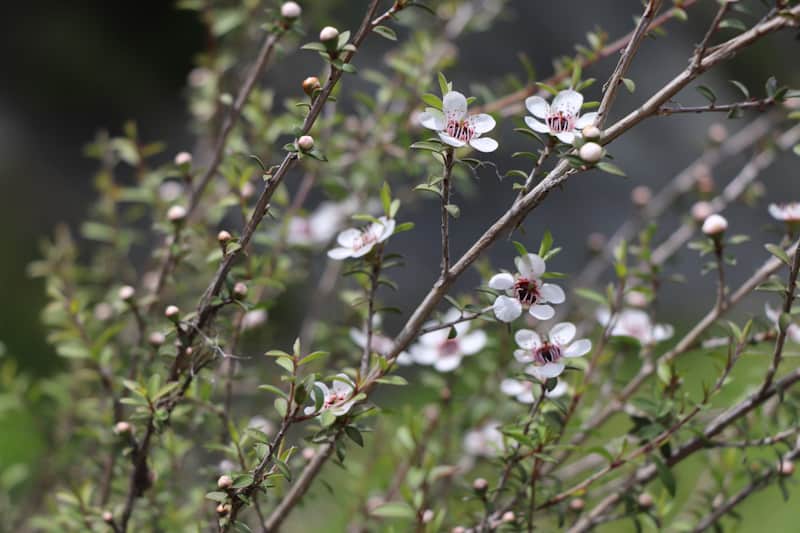The research team investigated invertebrate diversity in recently planted and old growth native forests at Taurapa Station in Te Matau a Māui/Hawke’s Bay. When newly planted mānuka was compared to the station’s old growth forest, the invertebrate communities suggested that as mānuka ngahere (forest) matures, the understory becomes increasingly accommodating of native invertebrates.
Over the last decade, the value of mānuka has ballooned as international markets become increasingly enamored by the bioactive compounds found in its oil and nectar. Honey production, as well as erosion reduction and waterway protection offered by plantations sweeten the appeal of incorporating mānuka into the landscape of working farms.
The primary author of the research Dr Corinne Watts says studying the role mānuka plays in the ecosystem provides insights that can, in turn, strengthen the ability of growers to establish and maintain healthy plantations.
In December 2018, Corinne’s team used tent-like malaise traps, pitfall traps and DNA metabarcoding of soil to survey and compare Taurapa Station’s mānuka biodiversity. They worked across eight plots in two habitat types: old fragments (approximately 80-100 years old) and mānuka planted in July 2017 (17 months old).
Corinne says the old growth forests hosted greater diversity, with native Eucolapis brunnea (bronze beetles) being most common. In the planted plots, where exotic pasture grass was more apparent, introduced beetles such as the ant-like Pseudocyclodidinus glaber were more common. Rō/stick insects were only observed in the old growth mānuka fragments, while false scorpions only showed up in pitfalls located in the recently planted mānuka plots. The most common invertebrate sampled overall was the tiny stilt-legged fly, Parentia spp., which preferred the old growth mānuka.
“It’s important baseline data for future collections,” says Corinne. “It shows that native invertebrate communities can survive in native plant fragments within highly modified landscapes and these are likely to act as source populations as the planted manuka ages and is restored.”
DNA metabarcoding is a novel method in the invertebrate community toolbox which complements conventional techniques, such as specimen collection. In this research, metabarcoding was used to look at the composition of soil biota (including prokaryotes, fungi and invertebrates), as well as on the samples gathered through pitfall and malaise traps, and comparing results from conventional specimen identification. This technique is cost effective and easy, only impeded by the lack of a comprehensive library of entries. Corrine says, “We need to increase the taxonomic coverage of reference sequence databases to increase the accuracy and resolution of metabarcoding.”
Cape to City is one of BioHeritage’s flagship sites. To find out more about their programme visit their website.
